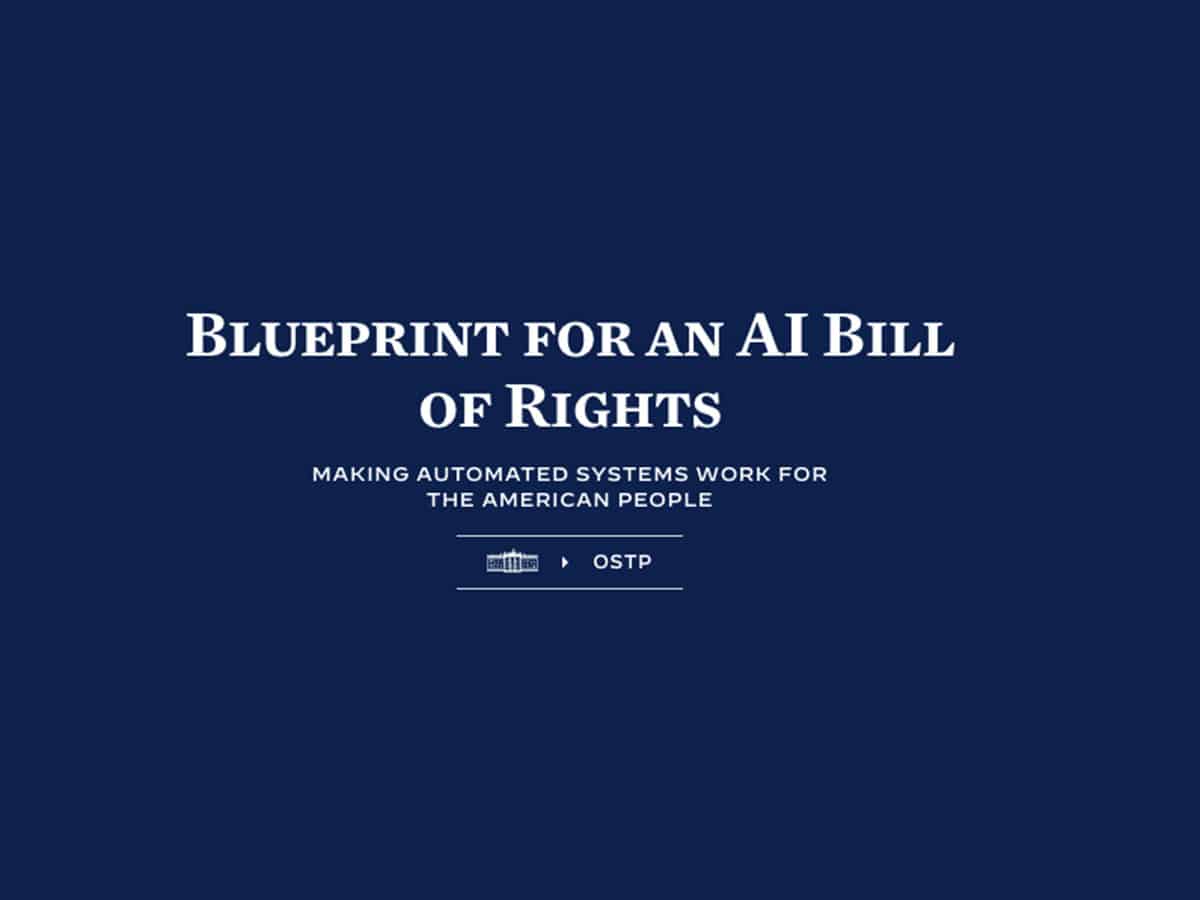
The US released the much-necessary blueprint for the AI bill of rights in October 2022. It provides a framework for drafting rules to regulate Artificial Intelligence in five aspects – AI systems’ adherence to domain-specific standards; protection against algorithmic discrimination; data privacy; notification of the use of automation and how it impacts users and; finally, the provision of human alternatives over automated services.
Importantly, the bill of rights mandates all internet firms to present the algorithmic functioning and its impact on an individual in easy and simple terms to the end user. In all the five aspects mentioned above, the definition of ‘easy’ is neither defined nor assumed. Rather, the Bill of rights advises conducting user experience research to determine what is ‘easy’ for the general public. Such research is conducted in real-time, where one version of the AI application will be released to a closed group of people, with their permission, for a certain period. During this time, the application would gather data from the users regarding their experience in using the application and aims to understand if the application design provides enough information clearly and crisply so that all the users understand it quickly. For example, the feedback helps the designers re-design the terms and conditions agreement if the users find the terms of data usage difficult to understand or fail to understand the company’s intention in the data usage. This is a practical way to operate data-related technologies with user consent. It is the first time a government document advises companies to conduct user experience research before flashing the terms and conditions for user consent.
Further, this bill of rights becomes important for everyone to understand since unregulated AI systems might adversely impact social actions worldwide. One particular impact worth reiterating here is the control of public behavior. Newspapers and other mass media were used to influence public thinking. However, such capacity has increased multi-fold because of the internet. As the internet became a necessary infrastructure for almost all social activities, the information shown in the search results will shape the attitudes of the public. Further, observe that all the internet platforms like Facebook, WhatsApp, and Google search engine are in the hands of a few global companies. When AI algorithms are developed and controlled by a few, the information consumption of the public is also controlled by those few. In his book Tools and Weapons, this assertion is supported by none other than the president of Microsoft, Brad Smith.
The initial paragraph introduces the AI bill of rights to anchor upon five principles. The above paragraph has reiterated that understanding the five principles within the AI bill of rights is in the purview of the global common good.
The five principles are following –
The first principle – ‘Safe systems,’ advises public consultation, robust testing, and risk identification before launching the AI system. Risk identification and assessment are conducted before the launch of the AI system for the public. Such research would anticipate the risks posed by AI in advance so that some appropriate safety measures will be taken. Even after launching it to the public, the document advises internet firms to continuously monitor AI performance to tackle previously unidentified or new issues.
The second principle – ‘Algorithmic discrimination protection,’ include testing the demographic data for discriminatory correlations before training any AI algorithm. That means that when the data set consisting of variables like gender, age, religion, income, and education are used to train the AI to identify the credit score, the spurious correlations emanating between the credit score and the variables should be avoided. In other words, AI can wrongly conclude that females would default more than males, and thus loans must not be issued to females. To avoid such wrong conclusions, all demographic data should be equally distributed. The usage of automation is not recommended if the demographic disparity is skewed and cannot be removed from the data.
The third one – the ‘Data privacy’ principle appropriately identifies the issues and provides a tentative framework to design a solution protecting individual data privacy. It again advises conducting prior research to understand and evaluate the data’s risks and not to process it when it outweighs the benefits. In addition, it also recommends conducting user experience research to confirm whether end-users understand the benefits and risks of consenting to data collection.
The ‘Notice and Explanation’ principle asserts that users should know why and how an automated system impacts their lives. It advises the firms to inform users in simple and understandable language whenever automated systems are used. To decide what is simple and plain language, again user experience research has to be conducted.
The fifth principle, ‘Human Alternatives, Consideration, and Fallback,’ advises all firms to provide an alternative to automated services. The end-users of the services should consciously decide on their consent to automated systems. If not, an easy procedure to opt out should be provided.
This bill of rights provides a globally adaptable framework that can be used for drafting regulations. Since the US had no comprehensive law on data privacy or AI regulation, this bill of rights becomes an equal match with the EU and China, which aim to control information freely flowing through the internet positively.
This blueprint released by the US is discussed here to provide a glimpse at the progress made by the US after releasing the first AI for American people document in 2019. India released its National Strategy for Artificial Intelligence (NSAI) in 2021 in two parts. The first part lists seven principles, and the second part advises establishing an apex-level body. Till today, India has not released a clear framework for AI regulation. It might not surprise anyone that future AI policy documents of India will have an extreme reference to the bill of rights. It will be great if India comes out with a similar bill of rights with detailed frameworks for realizing its seven AI principles mentioned in the NSAI.
